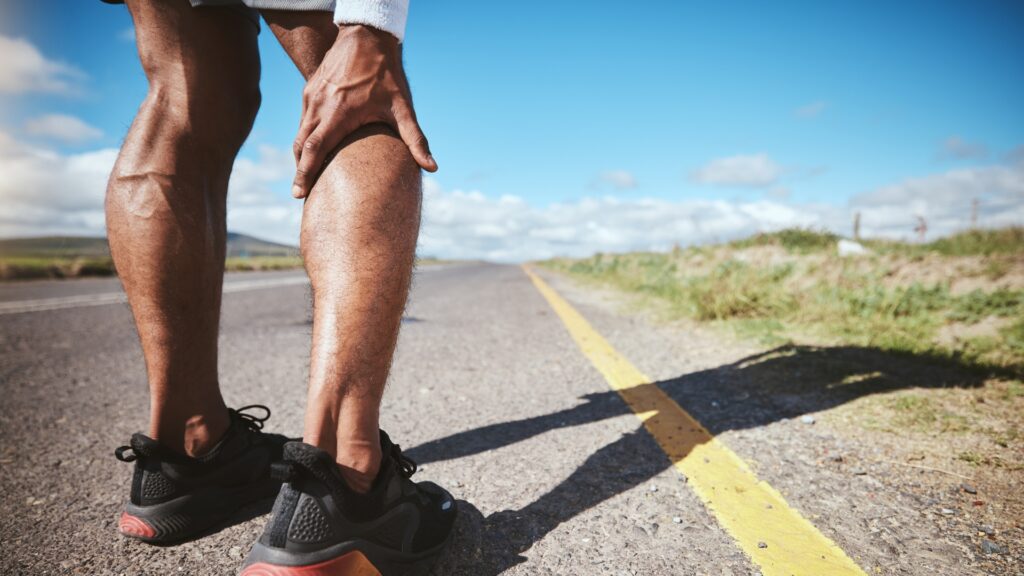Experiencing pain behind the knee can be a troubling issue for many runners, and it’s essential to identify the cause and find an effective solution.
In a recent episode of the Ask Coach Parry podcast, Lindsey Parry, an experienced running coach, addresses a question from Raniel Meesra about this specific type of pain.
Raniel describes experiencing sharp pain behind his knee, particularly after long runs of around 32 kilometers. This pain persists for about a week or two, especially when he wakes up, although it eases slightly once he starts moving. Lindsey offers valuable insights into potential causes and solutions for this issue.

Identifying the Source of Pain Behind the Knee
Several muscles and tendons could be responsible for pain behind the knee, including the hamstrings, calf muscles, and the popliteus. The popliteus muscle, located at the back of the knee, plays a crucial role in stabilizing the knee joint, especially during the initial 30 degrees of knee flexion. Given Raniel’s symptoms, Lindsey suggests that the pain is likely originating from either the hamstrings or the popliteus. Since the pain occurs after longer runs and has a significant role in knee stability, it is more likely associated with the popliteus.

Possible Causes of Pain Behind the Knee
Pain behind the knee can result from several factors, primarily related to overuse, muscle strain, or improper training techniques. The popliteus muscle could be strained due to its role in knee stability during running, particularly on uneven terrain or during long runs. Overuse of the hamstrings, especially during extensive uphill running, could also lead to pain. Additionally, poor running form, inadequate warm-up, or insufficient strength in the supporting muscles can contribute to this issue.
Managing and Treating Pain Behind the Knee
Addressing pain behind the knee involves a combination of rest, targeted exercises, and physiotherapy. Lindsey emphasizes that although Raniel’s pain improves even while he continues to run, it’s crucial to seek professional treatment to prevent the issue from worsening. Physiotherapy is often the first step, as a skilled physiotherapist can provide treatments to reduce inflammation and promote healing.
For the popliteus, specific strengthening exercises are essential. One effective exercise is the hamstring curl, focusing on the first 30 degrees of knee flexion. This targets the popliteus muscle and helps build its strength, enhancing knee stability. If the hamstrings are the source of pain, similar strengthening and stretching exercises are recommended to alleviate strain and improve flexibility.

Preventive Measures and Long-Term Solutions
To prevent recurring pain behind the knee, runners should incorporate a few key practices into their training routine. Proper warm-up exercises before running are vital to prepare the muscles and reduce the risk of injury. Dynamic stretches and light cardio can increase blood flow and flexibility, making the muscles more resilient to strain.
Strength training is another crucial component. Building strength in the core, glutes, hamstrings, and calf muscles can provide better support for the knee joint, reducing the likelihood of overuse injuries. Exercises such as squats, lunges, calf raises, and targeted hamstring curls should be part of a runner’s regular routine.
Making sure you do the correct strength training is important. The good news is we’ve created a free strength training plan for runners that you can download by clicking here.
Additionally, paying attention to running form can help prevent knee pain. Ensuring a proper stride, maintaining an upright posture, and avoiding overstriding can alleviate unnecessary stress on the knees. Consulting with a running coach or using video analysis can be beneficial in correcting any form issues.
Pain behind the knee is a common issue among runners, often caused by overuse or strain of the hamstrings or the popliteus muscle.
Identifying the exact source of pain is crucial for effective treatment. Seeking physiotherapy, incorporating targeted strengthening exercises, and following preventive measures can help manage and alleviate this pain. By maintaining proper running form, warming up adequately, and strengthening the supporting muscles, runners can reduce the risk of knee pain and enjoy a more comfortable and efficient running experience.



Comments are closed.